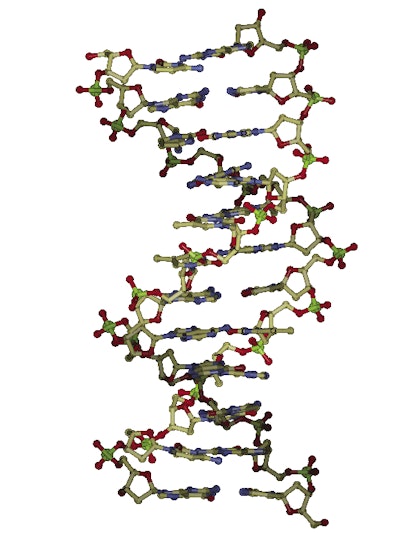
Dogs and cats benefit daily from the advances made in the field of veterinary nutrition. Because of the knowledge uncovered by researchers, companion animals are now living longer, healthier and more enriched lives. So, just what kinds of research are being conducted currently? Is the petfood industry helping or hampering the advancement of nutrition?
Petfood Industry asked some of the leaders in the field their opinion on topics such as this. Their answers follow.
Hazewinkel : We continue working on the influence of vitamin D on endochondral ossification and the significant difference in vitamin D metabolism between small breed and large breed dogs during growth and development. In addition, we are investigating the influence of nutraceuticals on the clinical effects of osteoarthrosis. We perform molecular genetic research, too.
Kirk: I collaborate with Dr. Joe Bartges here at the University of Tennessee, and we have varied projects. My three main research areas include: obesity in dogs and cats, with a special interest in factors associated with insulin resistance; nutritional influence on lower urinary tract disease in cats, specifically calcium oxalate urolith formation; and nutritional regulation of feline diabetes.
Swanson: My laboratory is currently focused on three primary areas of research, including intestinal health and disease, appetite regulation and obesity and geriatric nutrition. For example, we are studying biomarker detection of adipotoxicity in dogs and effects of dietary manipulation on gene expression profiles of geriatric and young adult dogs.
Hazewinkel: In my own research group, the discovery that vitamin D (which can reach a high level in homemade and commercial petfoods) disturbs endochondral ossification even before it influences calcium metabolism. This makes it worthwhile for commercial petfood companies to consider measuring and indicating a guarantee for maximum vitamin D content of petfoods, as has been done for the calcium content in diets for fast-growing dogs.
Kirk: I have been most impressed with the body of work by Drs. Zicker, Milgram and colleagues describing the impact of oxidative stress on canine cognition and learning. Their studies defining how increased antioxidants help reverse cognitive dysfunction and prevent cognitive decline were well designed, novel and sound. Also, the fact that there is such strong "translational" value (application to humans and other species) was important.
Finally, these studies lend more credence to the newer nutritional paradigm that we must move beyond simply meeting basic nutrient requirements and start defining optimal nutritional status within various lifestages and animal populations.
Swanson: I think one of the most important findings was recently published in Nature by Jeffrey Gordon's lab at Washington University, St. Louis, Missouri, USA. Turnbaugh et al. (2006) performed several experiments using gnotobiotic animal models and DNA-based microbial analyses, the results of which suggest that the gut microbiota are a contributing factor to the pathophysiology of obesity. Given the incidence of obesity and intestinal disease in the pet population, these findings are directly applicable to the petfood industry.
Hazewinkel: Nutraceuticals are a key issue since they open up new ways of influencing health via supplementation of the daily ration and through marketing by commercial food companies without the interference of the pharmaceutical industry. The effects can be very subtle and very species-specific; what works in a rat might not work in the human or canine species. This notion is growing but not widespread yet. Since the dog genome became known, the influence of the environment on the expression of potential diseases is of growing interest, especially the influence of the diet. Nutritional components may either prevent or stimulate disease progression. I expect growing interest in this field, since it can have a major impact on canine health.
Kirk: The overriding issue, in my opinion, is how to prevent obesity in our canine and feline population. The number of obesity-related health problems identified in dogs and cats suggests the overall impact on health and longevity is huge. Owners are footing the bill to manage health problems that are largely preventable. Thus, maintaining the human-animal bond associated with feeding pets without promoting obesity and impairing health will be a huge challenge. Learning the factors that affect appetite and satiety is one facet of the problem. Genomic response to breed, lifestage, nutrients, energy intake and activity will be another.
Swanson: Due to their importance in maintaining health and preventing and treating disease, the following areas are currently on the forefront, in my opinion:
1. Understanding microbe-host interactions.
2. Identifying gene-nutrient interactions of importance.
3. Applying new technologies to nutritional science, including genomic biology, imaging methods, nanotools, etc. These tools and techniques are not only important for research purposes, but are also important for advancements in clinical diagnostics.
Hazewinkel : A growing number of petfood companies do not (or not anymore) perform research in animals, but just copy the findings of the leading companies, or are more focused on marketing their product rather than on improving it. The concept that companies work together with universities to research new nutrition strategies seems to be decreasing.
Kirk: Yes, I think the major petfood companies are indeed up-to-date and actively involved in all aspects of research. I have to put my personal kudos in to these companies because I feel that they are good citizens of pet nutrition research. They conduct millions of dollars worth of nutritional research annually, fund grants for academic research and their scientists stay abreast and often lead the current research trends. Smaller companies without nutrition scientists or boarded nutritionists vary in their expertise, in my opinion. I find it very concerning when I call a company for nutritional information on a product and learn they can't give me basic information that would be used to establish nutritional adequacy (i.e., an AAFCO profile).
Swanson: The short answer is yes, I think most petfood manufacturers are aware of current research findings. However, I don't think that should overshadow the current problems pertaining to research in this industry. First, companies are likely aware of all the findings that are published in peer-reviewed journals. Despite the great number of abstracts presented at scientific meetings, however, very few are ever published in such journals. Abstracts are of little help to those in industry or academia.
The term "research" has dramatically changed over the past decade. At least from my perspective, it appears that a lot of traditional research funds have been shifted from fundamental research to marketing research, or to items that are only for altering public perception. These areas are important, but are self-serving.
Lastly, the current funding opportunities in canine and feline nutrition research are very limited. Large research grants (e.g., NIH or USDA) are only possible when using dogs and cats as animal models. While many non-profit or private organizations fund canine and feline research, most do not fund grants large enough to sustain a research program. If continued research advances in this field are expected, the current research climate must change.
Although my comments here may be somewhat depressing, it is not all bad. While the leaders in the petfood industry are commonly the target of criticism, I think many of them can be commended when it comes to funding and publishing research. Everybody in the industry should be very appreciative of the few companies that still perform fundamental canine and feline research. Advances in the field will not occur without them.












